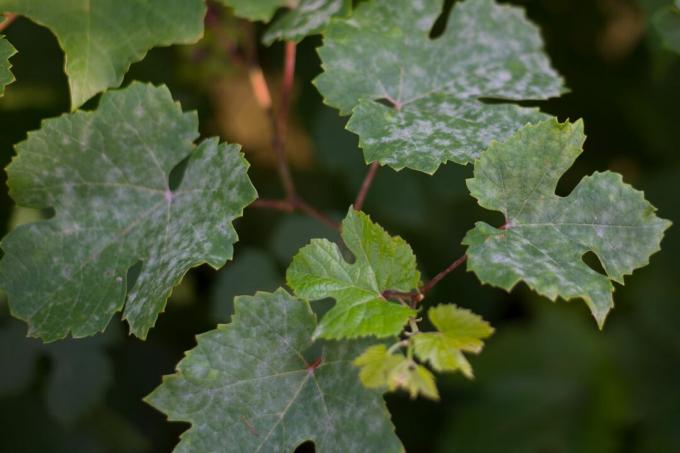Get rid of powdery mildew and downy mildew on wine: You can find out here whether home remedies can also help here and which biological sprays are suitable.

Grapes are increasingly being cultivated in private gardens. Regardless of whether the grapes are later processed into juice, Federweißer or wine, a mildew infestation can endanger the entire harvest. It is of secondary importance whether it is downy or powdery mildew. Both pathogens can cause significant damage. With a few tips, however, you can get the mildew plague under control again or even make combating it completely unnecessary through prevention.

Identify downy and powdery mildew
You can recognize powdery mildew by the characteristic grey-white fungal growth both on young shoots and on the leaves. Affected grapes stop growing and dry up, while larger berries burst open and can be infected by other pathogens. In contrast, downy mildew forms round, yellowish spots that also have an oily appearance. The fungal growth is here exclusively on the underside of the leaf. The grapes are not spared either and dry up when infested (leatherberries). Since grapevines are perennial, both types of mildew can also overwinter on the plants. An untreated powdery mildew disease is therefore very likely to break out again next year.
Prevent powdery mildew on vine plants
To prevent powdery mildew from gaining a foothold, the following tips should be followed: Vine plants should always be raised in an airy location. Dense shoots and dense foliage significantly increase the likelihood of an outbreak of the disease. When it comes to wine, the choice of variety is particularly important. Powdery mildew and downy mildew are imported diseases, which is why native European grape varieties have hardly any resistance to the fungus. The following varieties are very susceptible to powdery mildew: Portugieser, Elbling, Kerner, Trollinger, Silvaner, Muskateller. There are the following types of downy mildew: Müller-Thurgau, Gutedel, Portugieser, Limberger. Incidentally, the berries are no longer edible even with a slight mildew infestation, as the grapes develop a very unpleasant taste.
Protecting grapevines with baking soda and milk?
Powdery mildew, no matter whether it is fake or real, often adheres very stubbornly to the vine plants. The fungus begins to grow again in early spring and can attack the newly formed shoots. Unfortunately, home remedies such as baking powder or milk usually do not help here. But it is entirely possible to combat mildew with biological sprays. The biological agent must be sprayed several times on the affected plants, otherwise the powdery mildew will not be adequately controlled. In order for the spraying measure to be successful, you should also read the manufacturer's product instructions carefully. Resistant varieties offer the advantage that often only one or two sprays are necessary.
Are you looking for more information on powdery and downy mildew? Then visit our special article, where you will find everything related to the topic mildew Experienced.
